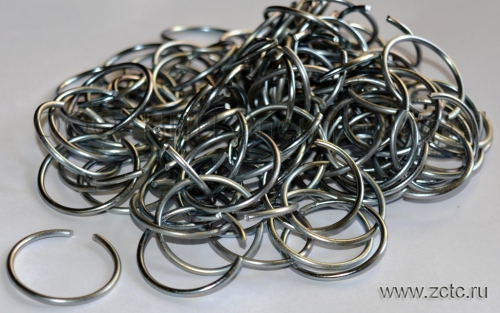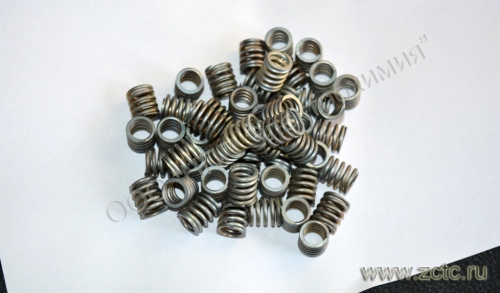GALVANIZING STEEL WITH HEAT TREATMENT
Description
In its properties, heat-treated galvanization has all the advantages of a standard coating and is used to protect steel products from corrosion. Heat treatment allows you to remove “hydrogen embrittlement,” which is especially important for high-strength steels with a tensile strength above 1380 MPa. In addition, it increases the adhesion of the coating to the base. Depending on the requirements for the corrosion resistance of products and their expected service life, the thickness of the galvanic zinc coating can range from 6 to 50 microns. It should be taken into account that the use of a thin coating less than 6 microns is impractical, because at these thicknesses the degree of protection provided will be very low. When galvanizing with a thick layer, internal stresses in the coating may increase. The thickness of the white chromite film is no more than 0.025-0.08 microns, and there is no hexavalent chromium in it. The durability of white zinc without additional treatment with polymer compounds in 5% salt spray is about 20-80 hours, in rare cases - 240. The corrosion rate of non-passivated zinc depends on pH:

You can order galvanizing of steel with heat treatment in accordance with GOST 9.305-84 by phone and email indicated in the section "CONTACTS".
Characteristics
|
Designation (example) |
Zn.t |
|
Thickness |
6-50 microns (greater thickness is possible) |
|
Microhardness |
490-1180 MPa |
|
Electrical resistivity at 18° C |
5.75×10-8 Ohm⋅m |
|
Permissible operating temperature |
300° C |
Advantages:
- The zinc coating is anodic in relation to steel and protects steel products from corrosion electrochemically at temperatures up to 70°C. The anodic nature of the protection of the zinc coating allows you to protect steel products even in the presence of damage (scratches, pores, chips). At temperatures above 70o C, the nature of the protection changes to cathodic (mechanical).
- The heat-treated zinc coating is more ductile, adheres better to the base, and the products themselves, after heat treatment, are free from hydrogen embrittlement.
- Prevents contact corrosion when mating steel with parts made of aluminum and its alloys.
- Ensures easy screwing of threaded parts.
- Chromite colorless films do not contain hexavalent chromium and meet stringent environmental requirements.
- White galvanizing is used to ensure electrical conductivity and when crimping plastics at temperatures above 100°; S.
- The zinc coating produced at our enterprise with heat treatment is ductile, withstands bending and flaring, thanks to the use of unique shine-forming additives in the electrolyte. It also has a high uniformity in thickness, which is confirmed by metallographic studies:
A microphotograph of a cross-section of the coating is shown below:

Disadvantages of galvanizing:
- Passive zinc film is mechanically relatively weak. It loses its decorative appearance under the condition of periodic mechanical influence: the touch of a tool, hands. Also, the coating fades during heat treatment.
- Zinc has increased brittleness at temperatures above 250°; C and below minus 70° C.
- White zinc coating has low chemical resistance to products released during aging of organic materials.
- Colorless chromite film does not have the property of “self-healing”, i.e. is not able to restore its properties in case of minor mechanical damage, such as scratches, unlike chromate films.

Read also articles
Galvanizing mechanism
Description of the galvanic galvanizing process. Electrolytes.
Hydrogenation and removal of hydrogenation of steel after galvanizing
The problem of hydrogenation during galvanizing. How to dehydrate?

Do you want to become our client?
Just leave your request by filling out the form on the right and we will contact you as soon as possible. Thank you!

By submitting an application, you agree to processing of your personal data. Your data is protected.






